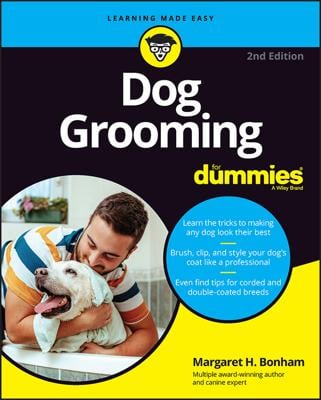With separation related behaviors (SRB), also called separation anxiety, your dog becomes anxious and stressed when you leave him. Dogs that experience separation anxiety usually are highly pack-oriented and are slow to fight.
The most typical and obvious signs of separation anxiety are destructive behaviors (chewing or scratching), vocalizations (whining, barking, or howling), house soiling, pacing, and excessive drooling.
One solution to your dog’s loneliness is to get another dog. They can keep each other amused, and two dogs are more than twice the fun of one dog. But be warned that two dogs can also mean double trouble.
In some cases, having an overly solicitous owner causes separation anxiety. As the owner prepares to leave the house, he or she makes a big fuss over the dog: “Now don’t worry, mommy/daddy will be back soon, but I have to go to work. You be a good boy while I’m gone and I’ll bring you a nice treat.”
Such reassurances serve to increase the dog’s anxiety at the expectation of being left alone. The owner then makes an equally big fuss upon his or her return: “Poor boy. Did you miss me while I was gone? I missed you too. Were you a good boy?” These utterances increase the dog’s excitement in anticipation of the owner’s return. Small wonder the dog becomes anxious.
The desensitizing approach to soothing separation anxiety
People are just as much creatures of habit as dogs are and tend to follow a specific pattern before leaving the house. This pattern becomes the dog’s cue that you’re about to depart.
Make a list of your customary routine before you leave the house. For example, putting on makeup, picking up your bag or briefcase, picking up the car keys, putting on your coat, turning off the lights, and reassuring and petting the dog.
At odd intervals, several times during the day, go through your routine exactly as you would prior to leaving, and then sit in a chair and read the paper or watch TV, or just putter around the house. By following this procedure, you’ll begin to desensitize the dog to the cues that you’re about to leave.
When your dog ignores the cues, leave the house, without paying any attention to the dog, for about five minutes. Return, and again, don’t pay any attention to him. Repeat this process, staying out for progressively longer periods.
Turning on the radio or TV and providing suitable toys for your dog also may help. Whatever you do, make sure to ignore the dog for five minutes after your return. What you want to accomplish is to take the emotional element out of your going and coming so your dog will view the separation as a normal part of a day and not as reason to get excited.
The D.A.P. approach to easing your dog's anxiety
Another way to cope with separation anxiety is to use D.A.P. — Dog Appeasing Pheromone — a product developed by vets that mimics the properties of the natural pheromones of the lactating female dog (don’t worry, it’s odorless to people). After giving birth, a mother dog generates pheromones that give her puppies a sense of well being and reassurance.
D.A.P. is an electrical plug-in diffuser that dispenses the pheromone, which the dog’s sense of smell detects. The pheromone reminds the dog of the well being he felt as a puppy.
In clinical trials, D.A.P. was effective in about 75 percent of cases in improving separation-related behaviors. To be effective, the diffuser must be left plugged in 24 hours a day. D.A.P. is available at pet stores and from pet product catalogs.

